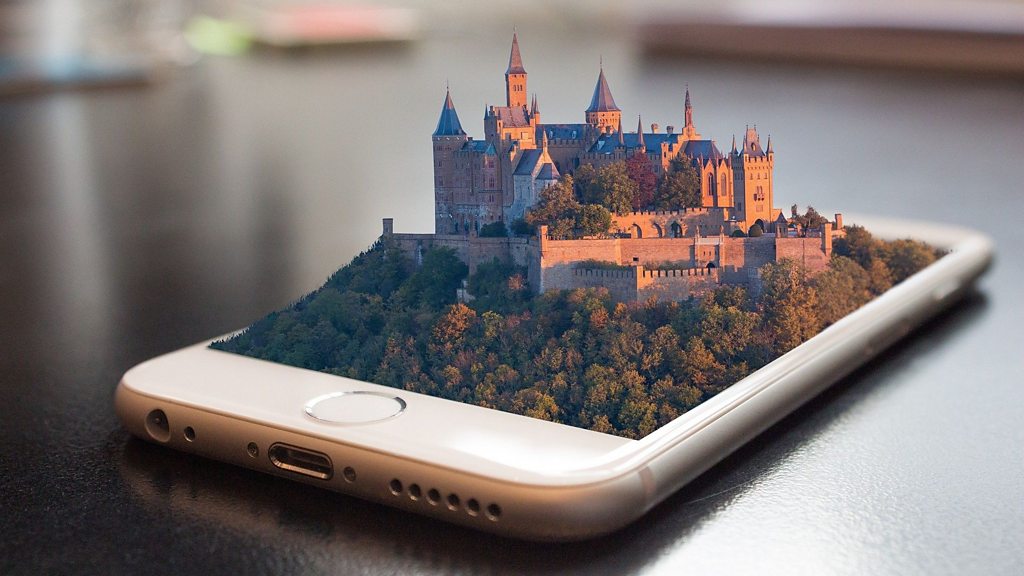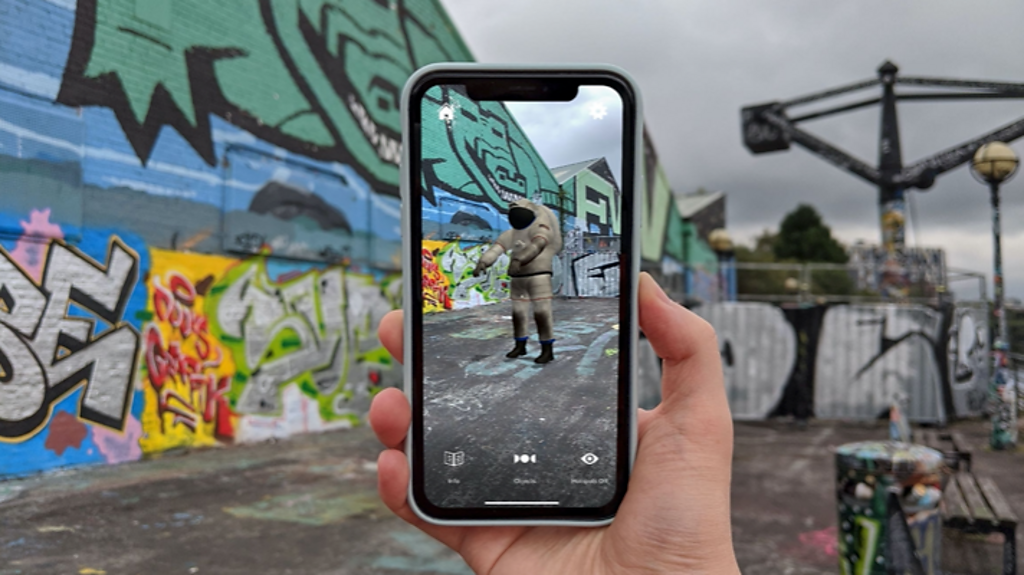Augmented Reality in 30 seconds
1
AR is an interactive form of experience where your real-world environment is augmented using content2
As a public service provider, 大象传媒 R&D has a responsibility to understand AR鈥檚 role in the future3
You鈥檙e probably already using AR! AR powers selfie filters - but can do so much more
What is Augmented Reality?

Augmented Reality is a term that describes a lot of things - at the heart of it is the trick of fooling your brain into believing something 鈥榚xists鈥� in the real world when that illusion is created by a technology.
AR is an interactive form of experience where your real-world environment is augmented, added to or enhanced using computer generated content. You might think of this as a solely visual medium but new technologies allow you to create audio-driven experiences and, who knows, in the future other senses could be used too.
The bigger picture of Augmented Reality

3D Content Creating content in 3D is an important skill for creating AR, as AR experiences enhance the real world which is inherently 鈥榮patial鈥�, or three dimensional, the content you create and place it in needs to mirror that to feel real and believable.
That doesn鈥檛 mean highly stylised, or in some cases actual 2D content, can鈥檛 work, just that AR is a 鈥�3D first鈥� medium, whereas something like TV could be seen as a 鈥�2D first鈥� medium.

Audio Augmented Reality Audio Augmented Reality (AAR) technologies are now coming to market, and this technology presents new opportunities for information and experience design.
Collaborative or multiplayer experiences in AAR are potentially an exciting opportunity as they allow users to interact in real-time and space with each other, without the barrier of a screen.

AR and Accessibility AR provides the amazing ability for people to learn more about the world around them, as well as adventure into brand new worlds, right from the comfort of their own homes.
It's a powerful technology with the potential to offer entertainment, information, and assistance for users, and huge benefits for those with disabilities.
Why is 大象传媒 R&D interested in Augmented Reality?

AR is usually associated with selfie filters, snap chat etc. but the technology behind it is incredibly powerful. There is the potential for technology like AR glasses in the future to overlay content on our world, which also creates potential for it to be 鈥榓bused鈥� and a risk of large private companies to mediate reality. As a public service provider, the 大象传媒 has responsibility to understand what role it might take in this in the future.
We have already done a lot of research in this space, including releasing an AR app alongside the 大象传媒2 programme 'Civilisations' and we are currently testing a number of different prototypes to assess their value to audiences - from practical applications to entertainment.

